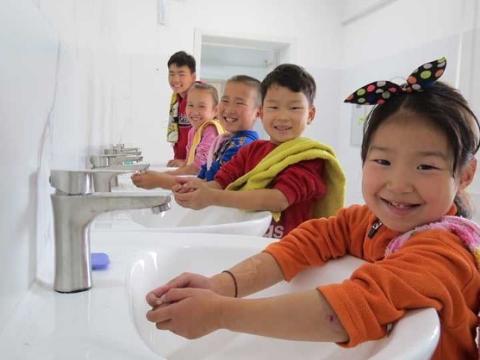Grey water system: A water and sanitation solution for boarding schools in Mongolia

Half of Mongolia’s population lives in the capital city, while the rest reside in rural areas. In these rural communities, there is a significant lack of understanding regarding sanitation facilities and clean water systems. This lack of knowledge extends to the impact of excessive use of toilets, surface water, and groundwater on the environment. By 2019, 80 percent of the boarding schools in Selenge Province had outdoor toilets. These conditions led to the spread of infectious diseases, soil contamination through human waste, and pollution from natural disasters and heavy rainfall. Additionally, the drinking water conditions were substandard, with poor shower facilities and inadequate personal hygiene conditions, particularly affecting teenage girls and boys. This environment was not conducive to the healthy growth and development of children aged 6 to 18.
The vision and planning of Selenge Province did not prioritize improving the living conditions of boarding school children, nor did it consider the reuse of grey water. Mongolia, with its low average precipitation and limited water resources, faces significant water scarcity issues. The country has a total water reservoir of 564.8 km³, with 98% being groundwater. Mongolia relies on underground water for more than 70 percent of its total water needs, which constitutes only 1.9 percent of the country’s water supply. Approximately 77 percent of Mongolia’s territory is degraded, and 1,244 lakes have been destroyed. These figures highlight Mongolia’s critical need for clean and valuable water resources. Selenge Province, which accounts for 57 percent of Mongolia’s surface water supply, has seen a reduction in its surface water reserves in recent years. Despite these challenges, little action has been taken to address these issues.
World Vision Mongolia introduced environmentally friendly innovations to create sanitation facilities that reuse grey water in three communities in Selenge Province. Children of herder families, living about 45 km from the province centre, reside in a dormitory near a secondary school in Selenge. These children had never used modern sanitation facilities before. They relied on outdoor toilets and makeshift baths in small containers, enduring extreme temperatures ranging from -36 degrees Celsius in winter to +36 degrees Celsius in summer, along with windy and stormy conditions. The community, parents, and children accepted these conditions as normal, never imagining the possibility of reusing grey water as an environmentally friendly technology.
Since the project began, communities, parents, and children have collaborated with a mix of faith and scepticism. Within three seasons—spring, summer, and fall—they were able to utilize modern sanitation facilities. Initially, the children found the new facilities more aesthetically pleasing but had to learn new habits to use them properly. Today, they shower and use the sanitation facilities, and the grey water is used to irrigate green spaces around their dormitory under adult supervision.
The success of this project was unexpected. Local citizens doubted the feasibility of reusing grey water in boarding schools, but the children have embraced the new sanitation facilities and are incorporating environmentally friendly technologies into their lives. Local officials have also worked to create a brighter, warmer environment, paying more attention to the educational needs of boarding school children. Since 2021, most local institutions have adopted this autonomous landscape rotating technology, which can recycle 99 percent of pollutants and grey water. The federal budget now includes funding for two boarding schools that meet the new modern requirements of the program, located in the Orchid and Santiago areas. The work accomplished in just three locations has provided a new perspective on the children’s environment and motivated the use of environmentally friendly technology.
The children are now happier and healthier. Although they are still learning to live away from their families, their living conditions have significantly improved. They are learning about the natural water cycle and how human actions can positively impact the environment. These children will grow up to be environmentally conscious individuals who care about others and the planet. Parents are also changing, focusing more on their children’s education and living conditions. The community is seeking new solutions, and children are learning the value of collaboration and the effectiveness of collective efforts. Children who feel safe and healthy in their environment are growing up to be happy, positive, and helpful individuals.
In conclusion, the WASH project using the grey water system in Selenge Province is a testament to the power of sustainable development and community resilience. By leveraging innovative solutions and fostering collaboration, the project has not only improved sanitation and water management but has also restored hope and dignity to those who needed it most. The children’s stories are just a few examples of the many lives transformed by this initiative. As the project continues to grow and evolve, it will undoubtedly continue to make a lasting impact on the communities it serves, inspiring others to adopt similar approaches and contributing to a more sustainable and equitable future for all. The ongoing success of this project highlights the importance of community-driven solutions in addressing global challenges.